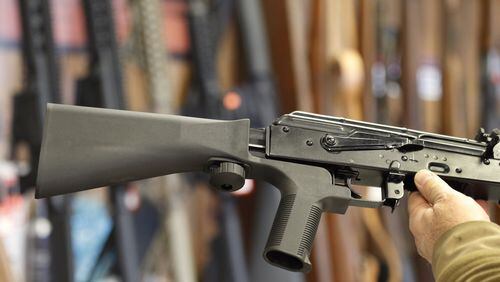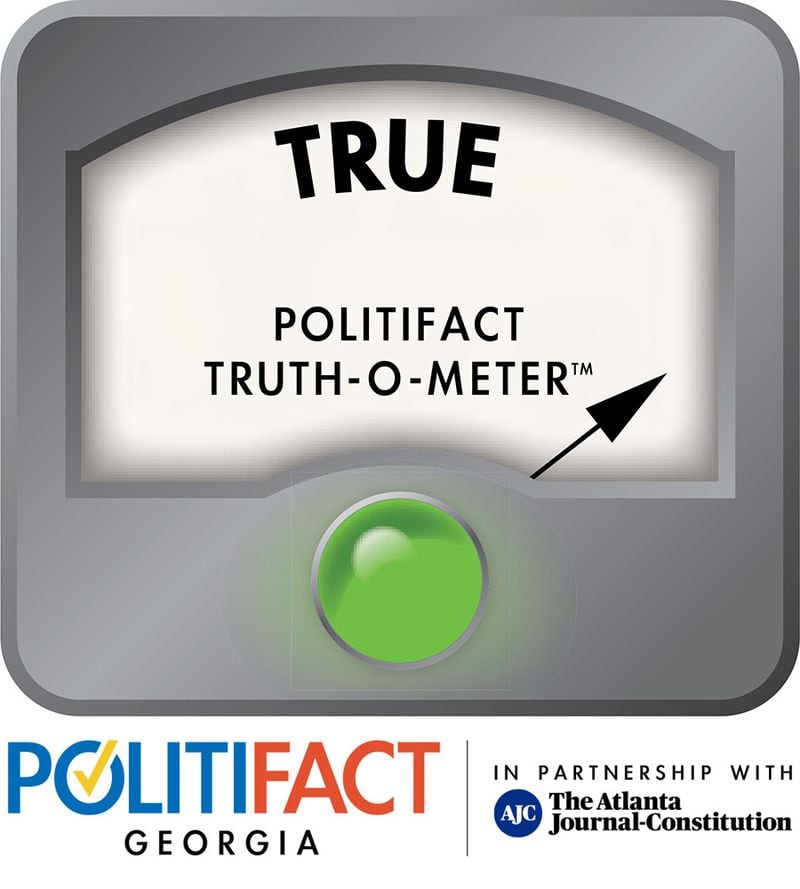In a rare move, the National Rifle Association issued a statement calling for regulation of the device that turned the Las Vegas shooter’s rifles more deadly, blaming Barack Obama’s administration for its approval.
A bump or fire stock is a device that allows semiautomatic rifles to fire bullets as quickly as a machine gun. At least 12 of the Las Vegas shooter’s guns were outfitted with them.
But did Obama approve their legality? Sort of, but approved is probably the wrong word.
NRA spokeswoman Amy Hunter pointed us to a June 2010 approval letter from ATF, an agency under executive purview, sent to Slide Fire, a bump stock manufacturer. Spelling out the legal definition of a firearm, ATF’s technology chief John Spencer determined it was not regulated by law.
“The stock has no automatically functioning mechanical parts or springs and performs no automatic mechanical function when installed,” Spencer wrote. “Accordingly, we find that the ‘bump-stock’ is a firearm part and is not regulated as a firearm under Gun Control Act or the National Firearms Act.”
Bump stocks harness a weapon’s recoil to cause the user’s finger to squeeze the trigger repeatedly, but because they don’t alter the gun’s internal mechanisms, they were considered lawful.
We found a similar 2012 letter addressed to Bump Fire, a competing manufacturer.
But just as these bump stocks didn’t qualify for regulation, two similar devices did.
The difference? The Akins Accelerator and the Autoglove were determined in 2007 and 2017, respectively, to have mechanical parts that enhanced the trigger mechanism, making them machine guns.
"Electrically-driven trigger devices are considered 'machineguns' because they are a 'combination of parts designed and intended, for use in converting a weapon into a machinegun,' " ATF's letter to AutoGlove read.
Automatic weapon sales have been restricted since the 1934 National Firearms Act, and 1986 regulations made it much harder for civilians to get an automatic weapon like a machine gun.
Experts in firearm policy were divided when we asked about the fairness of the NRA’s characterization.
Adam Winkler, a law professor at University of California, Los Angeles, who specializes in guns, said it was appropriate to characterize the ATF answer to the first two companies as an approval under the Obama administration. “Not because they liked it, but because the law did not permit them to prohibit it,” Winkler said.
Other legal experts stressed that it wasn’t an approval, but rather a determination that current law didn’t allow for its regulation.
“The statement implies Obama or (U.S. Attorney General Eric) Holder was somehow involved, and that it was an issue that wouldn’t have been approved in any other administration, and that’s technically incorrect,” said Rick Vasquez, a former Firearms Technology Branch official who first signed off on the recommendation the ATF could not regulate the Slide Fire.
John Pierce, a lawyer and advocate for gun rights, said, “I believe (the NRA) were stating that just to point out that this wasn’t some rogue decision made during a Republican administration, which would be more friendly to gun owners, and therefore that when they re-evaluate it, they’re going to have to take a really close look at the law,” said
To re-evaluate the bump stock, Vasquez said the ATF would have to change the way it interpreted the National Firearms Act or issue new legislation that would allow the device to be regulated.
Our ruling
We found two occasions in which ATF, a bureau within the executive branch, decided it could not regulate bump stocks during the Obama administration. These decisions allowed two companies to sell bump stocks. It’s important to note this was not a statement of Obama’s preferred policy, which called for more regulation of guns, but was what the agency determined it had to do under the language of current law.
We rate this statement Mostly True.
“The Obama administration approved the sale of bump fire stocks on at least two occasions.”
— National Rifle Association on Thursday, Oct. 5, 2017 in a press release
About the Author







